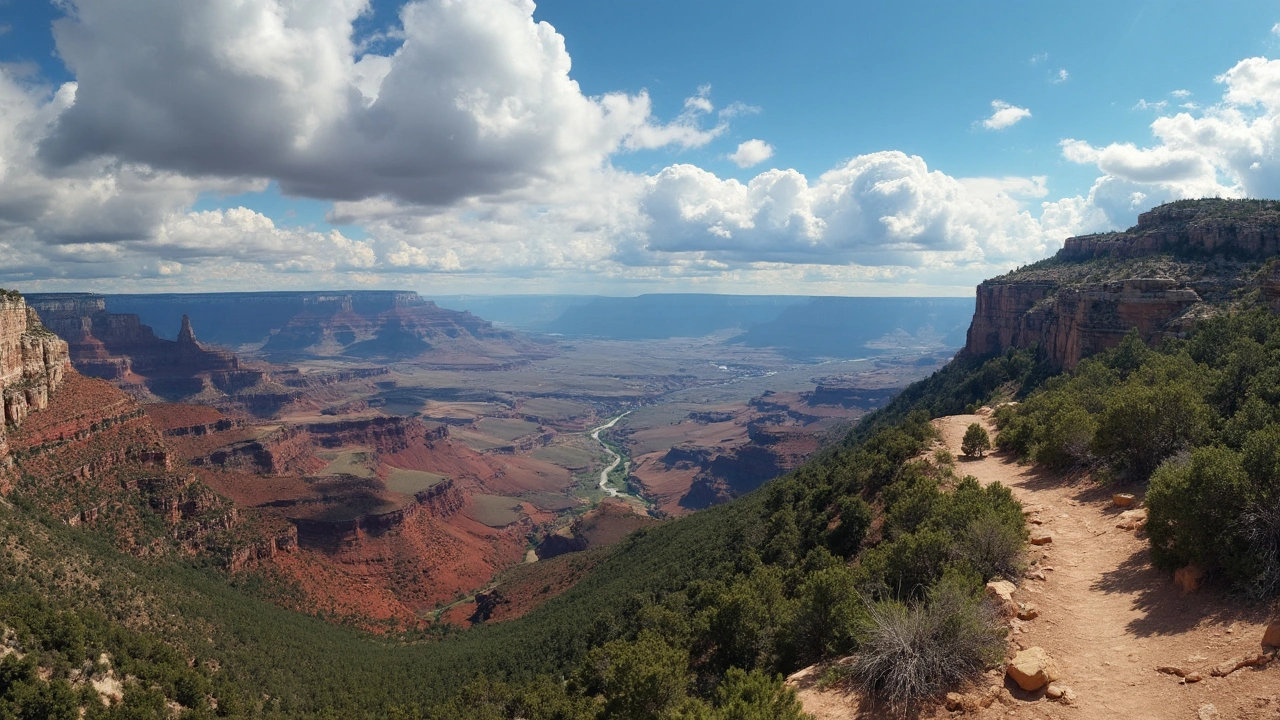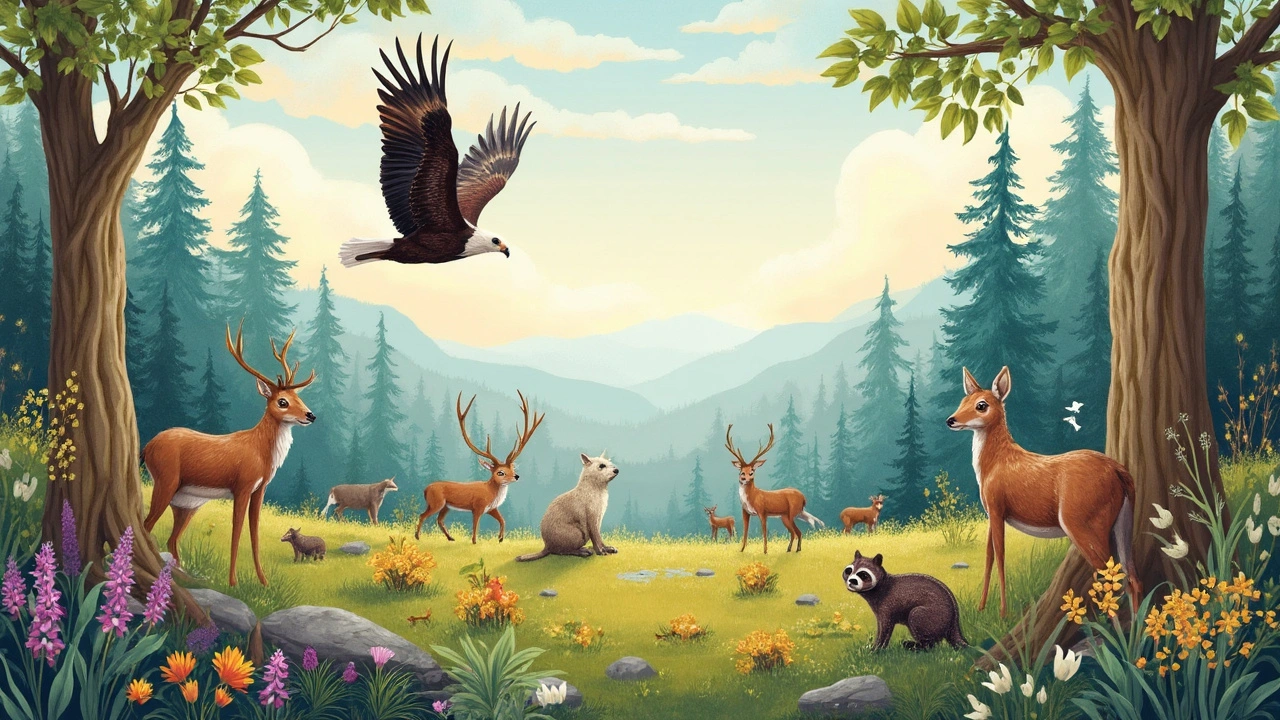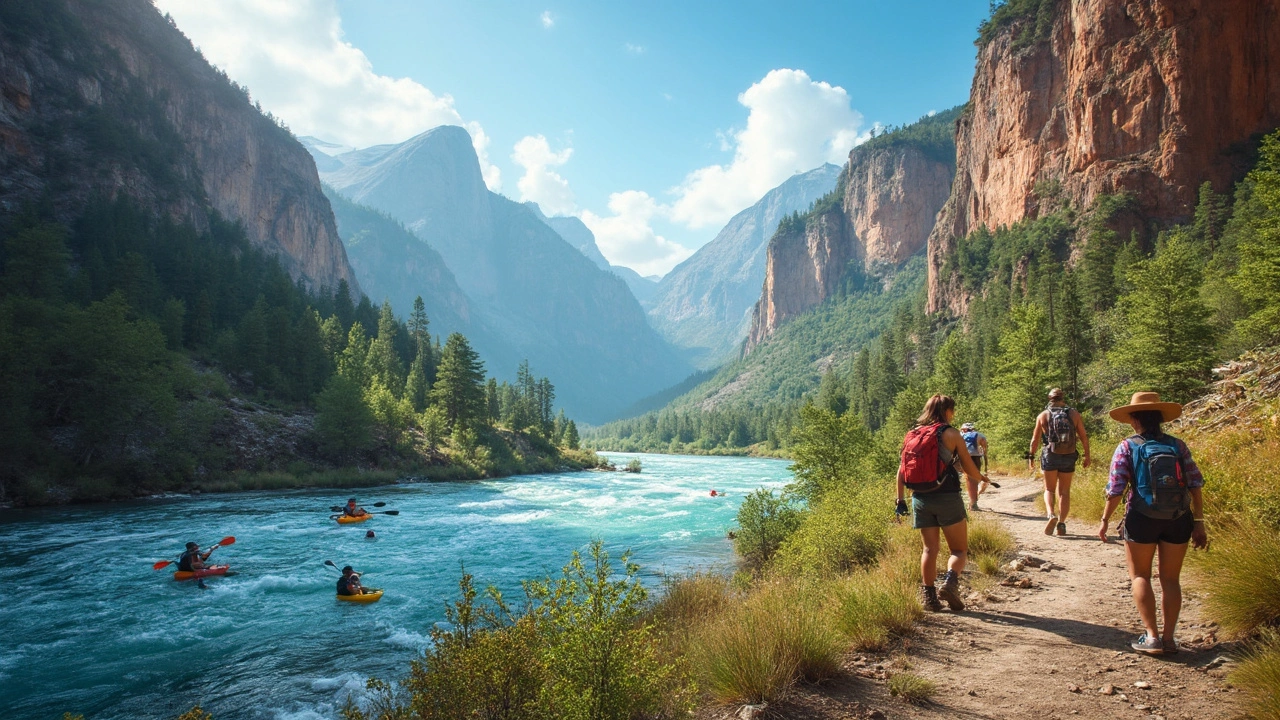Which National Park Touches 3 States?

If you've ever wondered about the fascinating blend of natural beauty and geographic quirkiness, then you're in for a treat. There's a national park in the U.S. that stretches over three states, making it a unique destination for adventurers and nature lovers alike. Can you guess which park manages to claim its home in more than one state?
It's none other than Yellowstone National Park. This iconic park spreads its glory across Wyoming, Montana, and Idaho. Imagine standing at a spot where three different states unite in a seamless display of nature's wonder. It's a thrill for both geography buffs and those just looking for a unique spot to snap a selfie.
The park's immense size contributes to its breathtaking variety. From geysers and hot springs to diverse wildlife, the setting provides an array of ecosystems to explore. It's not just a single habitat but a collection of environments where you can witness everything from grizzly bears roaming the terrain to flocks of birds taking to the skies.
- Geographic Marvel
- Wildlife and Nature
- Recreational Activities
- Historical Significance
- Visitor Tips and Guide
Geographic Marvel
Yellowstone National Park is a real wonder, and being sprawled across three states makes it a true geographic marvel. Covering an impressive 3,472 square miles, this park dips its toes into Wyoming, where it houses the largest section, then stretches into the corners of Montana, and Idaho gets a fair share too. It's like having a big backyard that keeps going and going!
Three States' Adventure
Think about this: you could be hiking in Wyoming one morning, cross into Montana for a lunch break, and wind up watching the sunset in Idaho—all without leaving the park! Each part of the park offers its own unique landscapes and experiences. While Wyoming is home to the famous geothermal features like the Old Faithful Geyser, the Montana section boasts stunning mountain views. Idaho, although it holds the smallest portion of Yellowstone, presents beautiful and less crowded trails ideal for those looking to escape the crowds.
Interstate Wonders
Having a park that touches three states comes with some perks. Visitors get the chance to experience different state laws, cultures, and natural attractions all in one trip, without even noticing that they crossed state lines—unless they're checking it on their maps, of course! It's like a mini road trip within a single destination.
| State | Area Covered (sq miles) |
|---|---|
| Wyoming | 3,468 |
| Montana | 3 |
| Idaho | 2 |
Whether you're a keen hiker, a curious wildlife observer, or a casual tourist, traveling across these state boundaries while exploring the park adds an extra layer of excitement to your adventure. It's a chance to check three states off your list in one go, all while soaking up the varied and beautiful scenery.
Wildlife and Nature
Yellowstone National Park is a haven for wildlife enthusiasts. As you journey through the park, you'll find a remarkable variety of animals thriving in its diverse landscapes. From imposing bison herds to elusive gray wolves, the park is a dynamic ecosystem teeming with life.
One of the most iconic residents of Yellowstone is the bison. Yellowstone boasts the largest concentration of wild bison in the United States, with thousands roaming the grasslands. These magnificent creatures are particularly visible during the spring when new calves are born.
Equally fascinating are the gray wolves, which were reintroduced to Yellowstone in the mid-1990s. This effort rejuvenated the predator-prey balance and had a surprisingly positive effect on the environment, influencing everything from vegetation to other wildlife populations.
Bird Watcher's Paradise
If you're into birdwatching, you're in luck. Yellowstone is known for its avian diversity. The park is home to more than 300 bird species, including bald eagles and trumpeter swans. Whether you're a seasoned birder or a casual observer, you'll find plenty to keep your binoculars busy.
Spring Awakening
During the spring, be on the lookout for bears emerging from hibernation. Both grizzly and black bears inhabit the park, and spring is when you'll most likely catch a glimpse of these solitary giants. Just remember to keep a safe distance—bears might look fluffy, but they are wild and unpredictable.
For those who love the smaller creatures, Yellowstone has them too. The park's rivers and lakes are teeming with fish, and you can spot many amphibians and reptiles in the more secluded areas.
Flora
Yellowstone's array of plant life is as varied as its animal life. The park's geothermal features create unique environments for several rare species. Don’t miss the vibrant wildflowers that come into bloom across the meadows in summer, painting the landscape in a dazzling display of colors.
| Animal | Estimated Population |
|---|---|
| Bison | ~4,900 |
| Gray Wolves | ~100 |
| Bears | ~150 (Grizzly) |
| Bird Species | 300+ |
Yellowstone’s nature provides countless opportunities for discovery and wonder, making it a dream destination for anyone interested in America's natural beauty.

Recreational Activities
Alright, let's talk about the fun stuff in Yellowstone National Park. This place isn't just about jaw-dropping views and fascinating geography. It's a playground for anyone looking to lace up their boots or hop on a bike.
Hiking Adventures
With more than 900 miles of hiking trails, you're spoiled for choice. Whether you're a seasoned hiker or just someone looking to stretch your legs, there's a trail with your name on it. The trails range from easy strolls to challenging backcountry treks. Want a tip? Don't miss the trail to Fairy Falls. It's a moderate hike with the bonus of seeing one of the tallest waterfalls in the park.
Wildlife Watching
If you fancy yourself a wildlife enthusiast, Yellowstone won't disappoint. Keep those binoculars handy because you might spot bison, elk, or even a grizzly bear. The Lamar Valley is often called the 'Serengeti of North America' for its abundant wildlife. Early mornings or late afternoons are the best times for sightings.
Fishing
Anglers, rejoice! The park offers excellent opportunities for fishing. The rivers and lakes are teeming with trout, and fishing in Yellowstone requires a special permit. Be sure to brush up on regulations, as the park has specific fishing seasons to protect its ecosystems.
Camping Under the Stars
Who doesn't love a night under the stars? Yellowstone has several campgrounds catering to everything from first-timers to seasoned campers. Just remember, you're in bear country. So, it's crucial to follow all food storage guidelines to keep both you and the wildlife safe.
Winter Sports
Don’t think the fun stops when the snow falls. Yellowstone transforms into a winter wonderland with opportunities for cross-country skiing, snowshoeing, and even snowmobiling. If you're brave enough to face the chilly temperatures, you'll be rewarded with some of the park's most stunning views.
Whether you're hiking, fishing, or catching a glimpse of wildlife, Yellowstone's three-state spread offers endless possibilities for making memories. And, with the park's abundance of activities, there's something for everyone to enjoy.
Historical Significance
Yellowstone National Park, apart from its natural wonders, carries a significant place in history as the first national park in the world, established back in 1872. That's right! President Ulysses S. Grant signed the Yellowstone National Park Protection Act into law, marking a revolutionary moment in conservation.
Before becoming a national park, Yellowstone was a region rich with activity from Native American tribes. Various tribes such as the Kiowa and Crow made use of its resources and considered the land sacred. Their deep connection to this land is reflected in their folklore and traditions.
The late 1800s brought the park into the spotlight as a tourist destination, primarily accessible by railroads. Early explorers and cartographers documented Yellowstone's geysers and scenic beauty, which further paved the way for its recognition as a visual masterpiece.
Another interesting fact about Yellowstone is the establishment of the U.S. Army's presence in the park from 1886 to 1918. The army was responsible for overseeing and patrolling the area in its early years before the National Park Service took the reins. This period was crucial for developing policies to protect park lands against poaching and vandalism.
The Road to Preservation
Former President Theodore Roosevelt, known for his preservation efforts, played a pivotal role in expanding the lands around the park. Highlighting the park's importance, he even visited and camped in Yellowstone in 1903. The region's pristine environment served as a catalyst for broader conservation movements across the United States.
Today, as you walk through Yellowstone, you're not just stepping into a geographic marvel in three states. You're tracing the steps of history, where preservation and natural beauty have stood the test of time.
| Year | Event |
|---|---|
| 1872 | Yellowstone established as the first national park |
| 1886 | U.S. Army takes control for protection |
| 1918 | National Park Service assumes control |

Visitor Tips and Guide
Planning a trip to Yellowstone National Park can be a thrilling prospect, but there are a few tips to keep in mind to make sure you have an awesome experience. With a park covering parts of three states—Wyoming, Montana, and Idaho—it's essential to know your way around.
Best Times to Visit
Yellowstone is best visited during the late spring through early fall. The facilities open between April and October, depending on weather. Delicate wildflowers emerge in May and animal migrations occur in both spring and fall. Avoid large crowds by visiting during weekdays if possible.
Entrance Fees and Passes
A regular vehicle pass costs around $35, lasting for 7 days. If you’re planning to visit multiple national parks in the same year, consider the Annual National Parks Pass for about $80. It's a steal if you're a frequent nature wanderer!
Lodging and Camping
Yellowstone offers a range of accommodation options, from cozy lodges to various campgrounds. Book well in advance, especially if you’re visiting during peak seasons. Don't forget to check out the rustic lodges that exude Old West charm.
What to Pack
Layered clothing is key. Weather can change rapidly due to the park's elevation and geography. Carry a refillable water bottle, maps, and a first-aid kit. Always toss in bear spray if you plan on hiking. Safety first!
Wildlife Safety
You might find yourself close to buffalo or elk. Keep a safe distance—at least 25 yards from animals and 100 yards from bears and wolves. They may seem calm, but they're wild and unpredictable.
| Animal | Distance |
|---|---|
| Buffalo/Elk | 25 yards |
| Bears/Wolves | 100 yards |
Getting Around the Park
Driving is the most convenient method. Roads loop around major attractions. Be wary of traffic jams, often caused by animals crossing the roads. Biking is an eco-friendly option too.
With this guide, you're ready to explore one of America's most remarkable national parks that spans three states. Whether it's the geysers calling you or the vast landscapes, Yellowstone has a surprise around every corner!